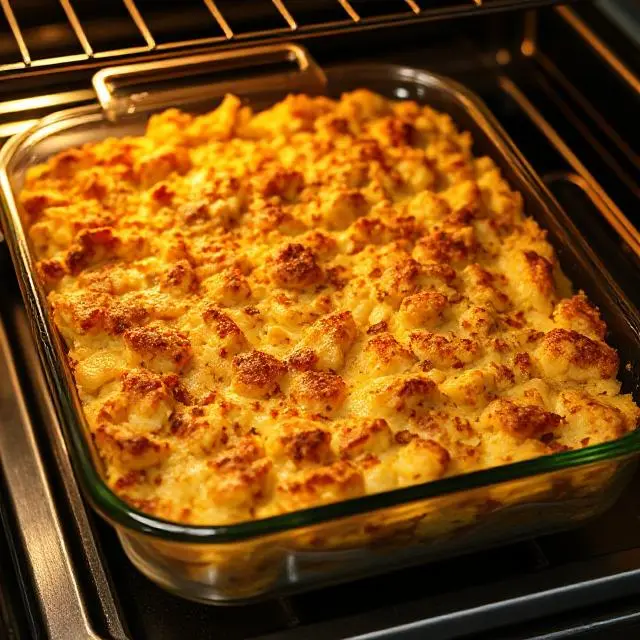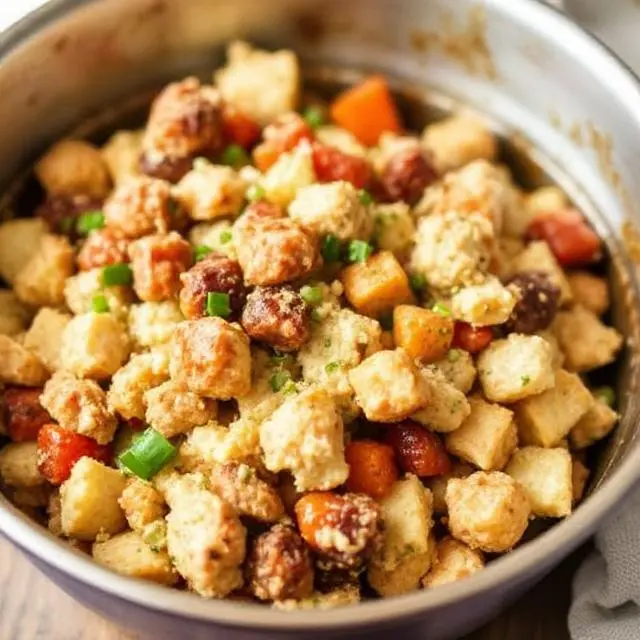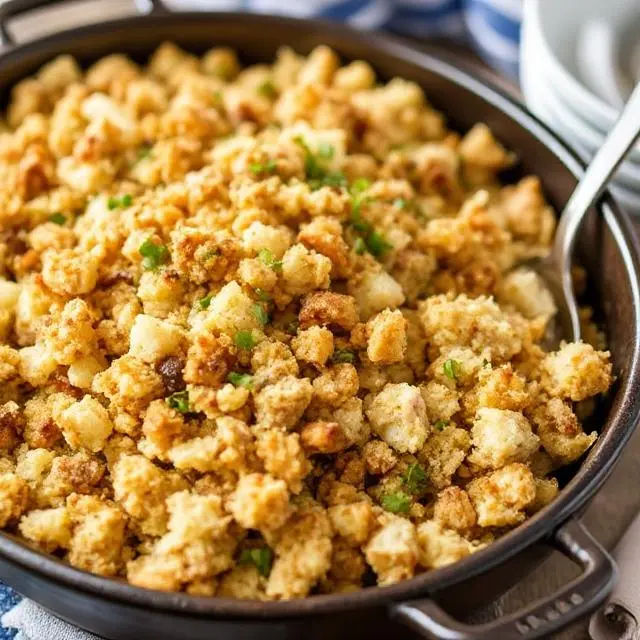Introduction
Stuffing recipe is a quintessential side dish that brings warmth and flavor to any meal, especially during holidays like Thanksgiving or Christmas. A perfect stuffing should be fluffy, moist, and packed with savory flavors that complement the main course. In this article, we’ll guide you through the steps to create the best stuffing recipe, ensuring it’s both fluffy and flavorful. Whether you’re a seasoned cook or a beginner, this guide will help you master the art of making stuffing that will impress your family and friends.
Essential Ingredients for the Perfect Stuffing Recipe
The foundation of a great stuffing lies in the quality and combination of ingredients. Here’s what you need to create a flavorful and fluffy stuffing.
Choosing the Right Bread
The type of bread you use is crucial for achieving the perfect texture. Opt for slightly stale bread, such as sourdough, French bread, or cornbread, as it absorbs the broth better without becoming mushy. Fresh bread can be dried in the oven for 10-15 minutes to achieve the desired texture.
Fragrant Aromatics and Fresh Herbs
Fresh herbs like sage, thyme, and rosemary add depth and aroma to your stuffing. Combine these with aromatics like onions, celery, and garlic to create a flavorful base. Sautéing these ingredients before mixing them with the bread ensures they release their full flavor.
Broth Selection for Moisture
A good-quality broth is essential for keeping your stuffing moist. Chicken or vegetable broth works well, but you can also use turkey broth for a richer flavor. Avoid over-saturating the bread; add the broth gradually until the mixture is moist but not soggy.
Optional Add-Ins for Extra Flavor
Enhance your stuffing with add-ins like dried cranberries, chopped apples, nuts, or sausage. These ingredients add sweetness, crunch, or savory notes, making your stuffing more complex and delicious.

A rustic wooden bowl filled with fresh herbs, bread cubes, and vegetables for stuffing.
Step-by-Step Instructions for Making Fluffy Stuffing Recipe
Follow these detailed steps to ensure your stuffing turns out fluffy and flavorful every time.
Preparing the Bread Cubes
Cut your bread into 1-inch cubes and spread them evenly on a baking sheet. Toast them in the oven at 300°F for 10-15 minutes until they are dry but not browned. This step ensures the bread absorbs the broth without becoming too soggy.
Sautéing the Aromatics
In a large skillet, melt butter over medium heat and sauté diced onions, celery, and garlic until they are soft and fragrant. Add fresh herbs and cook for another minute to release their flavors. This mixture will form the flavorful base of your stuffing.
Combining the Ingredients
In a large mixing bowl, combine the toasted bread cubes with the sautéed aromatics. Gradually pour in the broth, tossing the mixture gently to ensure even distribution. Add any optional ingredients like dried cranberries or sausage at this stage.
Baking to Perfection
Transfer the stuffing mixture to a greased baking dish and cover it with foil. Bake at 350°F for 30 minutes, then remove the foil and bake for an additional 15-20 minutes until the top is golden and crispy. This method ensures a fluffy interior and a crispy exterior.

A golden-brown stuffing dish fresh out of the oven.
Tips for Achieving the Perfect Texture
Texture is key to a great stuffing. Here’s how to ensure your stuffing is fluffy and not soggy.
Avoid Over-Mixing
Gently toss the ingredients to avoid breaking the bread cubes into smaller pieces. Over-mixing can result in a dense and heavy stuffing.
Monitor Broth Levels
Add the broth gradually and stop when the bread is moist but not dripping. Too much broth can make the stuffing soggy, while too little can leave it dry.
Let It Rest Before Serving
Allow the stuffing to rest for 10 minutes after baking. This helps the flavors meld together and makes it easier to serve.
Flavor Variations to Try
Experiment with these flavor variations to keep your stuffing exciting and unique.
Savory Sausage and Herb Stuffing
Add cooked sausage and extra herbs like parsley and chives for a hearty and savory twist.
Sweet and Tart Cranberry-Apple Stuffing
Incorporate diced apples and dried cranberries for a sweet and tangy flavor profile.
Nutty and Crunchy Pecan Stuffing
Mix in toasted pecans or walnuts for added crunch and a nutty flavor.
Pairing Stuffing with Main Dishes
Stuffing is a versatile side dish that pairs well with various main courses.
Classic Thanksgiving Turkey
Serve your stuffing alongside a roasted turkey for a traditional holiday meal.
Roasted Chicken or Pork
Pair stuffing with roasted chicken or pork for a comforting weeknight dinner.
Vegetarian Options
Stuffing can also be a star dish for vegetarians when paired with roasted vegetables or a lentil loaf.
Storing and Reheating Leftover Stuffing
Don’t let your delicious stuffing go to waste. Here’s how to store and reheat it properly.
Proper Storage Techniques
Store leftover stuffing in an airtight container in the refrigerator for up to 3 days. For longer storage, freeze it for up to 2 months.
Reheating for Best Results
Reheat stuffing in the oven at 350°F until warmed through. Add a splash of broth to keep it moist. Avoid microwaving, as it can make the stuffing soggy.

Storing and Reheating Leftover Stuffing: Best Tips for Freshness
Conclusion
Mastering the art of making fluffy and flavorful stuffing is easier than you think. By choosing the right ingredients, following the step-by-step instructions, and experimenting with flavor variations, you can create a stuffing that will become a staple at your dinner table. Whether it’s for a holiday feast or a cozy family dinner, this stuffing recipe is sure to impress. Happy cooking!
Advice
The key to making the perfect stuffing is balancing flavor and texture. Start with a good base—use a mix of sturdy bread like sourdough or a French baguette, cut into cubes, and toasted for extra crunch. Sauté onions, celery, and garlic in butter until soft, then add herbs like sage, thyme, and rosemary for that aromatic holiday touch. For moisture, add chicken or vegetable broth and an egg to bind everything together. Bake the stuffing in a casserole dish until the top is golden and crispy, while the inside stays fluffy and flavorful. You can also customize with additions like sausage, dried fruit, or nuts for added texture and richness.

